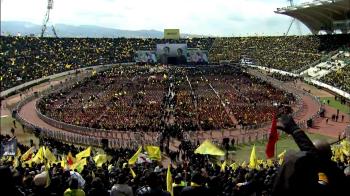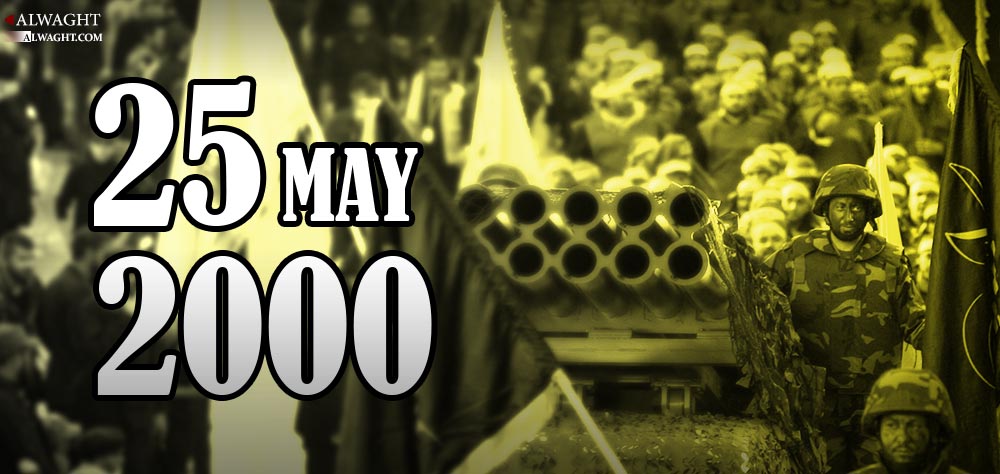Alwaght- 18 years ago, on 25May, 2000, the region saw a new history made when Lebanon’s Hezbollah movement liberated the south of the country from Israeli regime who for the first time in decades were forced out of an occupied Arab territory under strikes by the Lebanese movement’s fighters.
The development’s impacts went beyond time and place and paved the way for the advent of a new regional period. The region after Hezbollah’s victory was totally different from the time before that. Since then, Hezbollah’s position, power, and influence began to enlarge because of the accumulation of new responsibilities and challenges, turning the resistant force into a key actor immune to disregard not only in its own country Lebanon but also in the region as a whole.
The May 2000 victory marked the first major turning point in the Israeli-Arab conflict which is several-decades-long. After 22 years of hard struggle, the Israelis, in a humiliating way, were forced out of the southern Lebanese territories they had seized decades ago. The triumph was highly inspiring and encouraging to the Lebanese people and all Arab nations who saw their trust in the anti-Israeli resistance choice built. They learned that through this choice they can reclaim what remains of the occupied Arab lands.
The achievement also rendered the Lebanese factions united and solidified the “army-people-resistance equation”– a term Hezbollah’s Secretary-General Sayyed Hasan Nasrallah used to assure that as long as these three are united, Lebanon’s national security is protected against the Israeli aggression.
It also set a new equation with the Israeli regime after breaking the Israeli army’s invincibility legends, making the Israelis step back from their expansion agenda across the Muslim and Arab world and adopt a guarding and defensive gesture. This was the outset of a deterrence equation built to stir a string of Palestinian victories. Since then, the Palestinian factions believed the viability of the resistance and emerged a new generation never submissive to defeat, surrender, or demand of Israeli regime and its supporters.
The May 2000 success ushered in a string of other accomplishments. The Lebanese fighters captured a number of Israeli soldiers that served as a swap material for a deal to liberate a large number of Lebanese and Palestinian prisoners who have been jailed in the Israeli prisons for long years.
Hezbollah, in the meantime, was enhancing its powers at various levels, including filling its stock houses with a larger number of rockets, raising them from about 30-kilometer-range 20,000 rockets to over 100,000 rockets covering the whole occupied Palestinian territories.
The enhancement of missile strength stood basis for a new victory this time in 2006 war with Tel Aviv, known as 33-Day War. This time too, the result was humiliating to the Israelis. The 2006 war highlighted a big Hezbollah jump to a new stage of playing major regional and not an only home role.
Hezbollah, stronger and with bigger combat readiness, entered the allied Syrian government’s war on terrorism represented by a wide range of foreign-backed takfiri groups. Playing a significant role in an anti-terror campaign in Syria honed the movement’s combat skills, and finally, it came out as an indispensable regional player.
Hezbollah has never restricted its aspirations to the narrow party interests or political games. It never left its counter-Israeli resistance and pro-Palestinian support. As recently revealed by Sayyed Nasrallah, the US made an offer to the movement through a Lebanese journalist, George Nader. Washington told Hezbollah it can join the government, achieve power in the politics, and get billions of dollars in aids from the White House in return for forsaking the resistance to the Israeli aggression. Hezbollah rejected, a move solidified its popularity in the Arab world’s conscience.
Now Hezbollah owns beyond-expectations combat skills, mixing the guerrilla and regular army war tactics. Participation in the Syrian war transferred to Hezbollah fighters’ precious fighting experiences from the Syrian army and also the Iranian advisory forces. The diversity of the war fronts and conditions gave its fighters the high power to adjust fast to any possible circumstances.
Regarding political strength, the recent parliamentary election win re-exhibited Hezbollah’s public base. Its bastion in south very assertively expressed its support for the movement’s choice of role-playing in the country, Syria, Palestine, and Iraq. This very well hardened an equation recently set up by Hezbollah’s chief: “We will be present where we should be.”
Another noteworthy point is the firm alliance with other members of the Axis of Resistance. This means that if it is subjected to economic sanctions or political pressures, Hezbollah will not be alone to confront. Various allied fronts will be opened against the adversaries simultaneously, something shoring up its immunity and power of action.



























